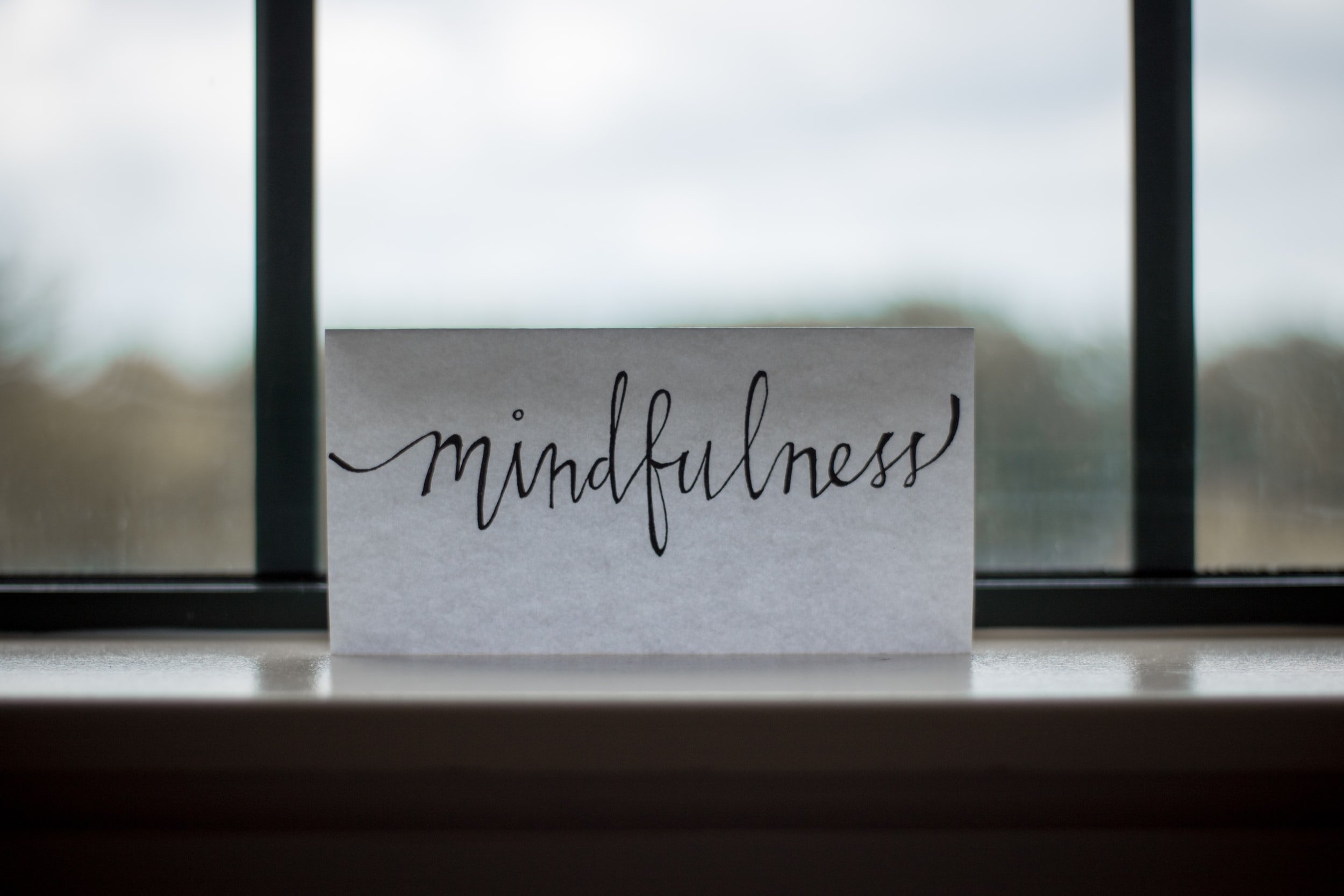5 Things Your Therapist Wishes You'd Do Outside of Session
The psychotherapy format is an interesting one. For one hour a week, we are invited to sit with a professional and discuss the deep complexity of our lives. In that hour, we might explore the in’s and out’s of our past, discuss our present stressors and difficulties, and practice tools to better navigate the waves of life. But when that hour closes and we say farewell to our unconditional support, we get to return to the ocean of momentum that is our every day lives. After our one hour of reprieve, we return to the people, places, and things that often challenge us and pull us out of alignment.
Because of these limitations, the work that occurs outside of the therapy office is incredibly important. Many therapists will agree that the efficacy of therapy depends not only on a client’s willingness to do work in session, but also their willingness to do work outside of session as well. In many ways, it’s where the rubber hits the road.
So what does our therapist or mental health provider wish we were doing outside of the therapy office? Are there certain practices or suggestions most therapists would agree support the therapeutic process? I discussed this question with Christina Swift and Aaron Galloway, two Boulder-based therapists specializing in the treatment of anxiety, depression, addiction, and trauma. Together, we came up with the following list- 5 things your therapist wishes you’d do outside of session!
Psychoeducation
Take just one stroll through the self-help section of your local bookstore and you will realize there is a wealth of psychological information available to you. A quick google search of the issue you are addressing in therapy will yield a slew of articles and online tools to build your awareness and knowledge of that particular issue. We call this process of learning about one’s mind and emotions, psychoeducation, and it can support the therapeutic journey in a number of ways.
Building a general knowledge base around topics like non-violent communication, attachment psychology, trauma dynamics, and mental health management can give you a leg up on the healing process. There are great resources that have made the subject of psychology much more accessible and intuitive, and investing in these resources can help catalyze the healing process. While you don’t need to become an expert on these topics (after-all, that is the role of the therapist), you will undoubtedly see benefits to pursuing psychoeducation. It provides a shared language with your therapist, enables you to feel empowered as a client, and creates an atmosphere of teamwork and equality. It’s always beneficial when both the therapist and the client get to bring forward wisdom and new tools.
For starters, check out Irving Yalom’s The Gift of Therapy, Bessel van der Kolk’s The Body Keeps the Score, and Healbright’s online mental wellness resources.
Movement Practice
Our bodies are the vessel that stores our memory, emotions, experiences, and trauma. Our bodies also hold our wisdom, power, and resilience. Because of this, most therapists will agree that a movement practice, such as yoga, stretching, martial arts, or dance, will undoubtedly support the therapeutic process.
Movement can be whatever it needs to be for each individual. It can be used as a form of self-expression, a form of cathartic release to move energy, or as a simple form of exercise. It can include big sweeping movements, or it can be gentle and subtle. Regardless of what it looks like, movement is an incredibly valuable tool in processing and integrating insights from therapy.
Since there is a strong cognitive component to most therapeutic work, movement practice can serve as a counter-balance to insight and awareness building that occurs in the office. Movement gives time for our system to settle and our body to integrate the new experiences and learning that occurs in deep therapeutic work. If you want to start a new movement practice, here is a simple resource for getting started.
Group Therapy
(written by Christina Swift)
One of the unsung heroes of the therapy world is group therapy. The commitment is intense (usually 90 minutes weekly for an unforeseeable amount of time) and the work can be challenging, but research has demonstrated time and again the meaningful benefit of group therapy to be equal to if not greater than that of individual therapy. As the saying goes “individual therapy prepares us for group therapy.”
A few of these beneficial therapeutic factors include the instillation of hope, universality, altruism, development of social skills, and understanding therapeutic dynamics like psychic functioning, the meaning of symptoms, interpersonal and group dynamics (Yalom and Leszcz 2005). In groups, witnessing other individuals at different stages in their self-awareness/self-acceptance journey provides hope that we may be able to do the same. Groups smack us into reality by realizing that our problems are not as unique or unacceptable as we have created in our own minds. Rather, our problems are “universal” or shared and experienced by others. In this way, group therapy allows us to move from isolation towards increased intimacy. Research also indicates how members will gain through giving, not only receiving. To move from believing you are a burden to believing you have something to offer is fundamental to rebuilding self-esteem (a cornerstone of therapeutic healing).
Lastly and perhaps the most effective factor is that groups allow us to directly engage the hurt/trauma (conscious and unconscious) that we experienced from our families (or primary upbringing group). Group itself resembles that of a family, a leader could be a parental/authority figure, a group member a sibling, and so on and so forth. Therefore, profound revelations and deep emotions can arise in this setting, which can be worked through in real time. Hopefully this allows us to learn why we may have developed some of our behaviors that served us then but no longer serve us now.
Hot/Cold Exposure
(written by Aaron Galloway)
There is a growing body of research supporting the health benefits of using a sauna on a regular basis. In addition to the physical benefits, this article (and plenty of others) suggests there are mental health benefits to routine sauna sits. Although there are plenty of health benefits for which I’m an advocate, as a trauma and attachment therapist I am primarily interested in using hot and cold temperatures as a way to learn about our relationship to our bodies, our stress responses, and how we regulate stress. I like the idea of treating hot/cold immersion as an experiment in which we get to play with our relationship with stress in a controlled, quickly changeable environment.
The root of trauma and many attachment issues are related to experiencing a stressor (threat), having an impulse to escape or fight back (fight/flight), and not being able to get away (in which case we shut down and experience powerlessness). Part of the healing process is to bring back a sense of trust and power into our bodies, which is where hot and cold temperatures come in. We can safely introduce the stressor (hot/cold), experience the stress in our bodies, and make choices about how we respond in a way that supports our power and trust rather than overwhelming our nervous system. After all, we can simply step out of the sauna or turn the cold water to warm water in the shower.
Here are some experiments you might try with a sauna, with hot and cold temperatures in a shower, or with an ice bath.
Mindfulness
There is perhaps no therapeutic skill more researched and supported than the practice of mindfulness. While there are endless working definitions of what mindfulness is, we are speaking simply about a form of awareness practice where the practitioner brings their attention to the present moment, creates a purposeful and focused attention, and infuses this attention with openness, acceptance, curiosity, and non-judgement. In application, mindfulness can look all types of ways. Some like to practice mindfulness using sitting meditation, where one takes a still posture and follows their breath. Others like more active or engaged forms of mindfulness, such as using guided imagery or conscious breathwork patterns. Regardless, the intention remains generally the same and it’s a moment to direct one’s attention inward and tend to present moment experience.
An active and consistent mindfulness practice outside of the therapy office will undoubtedly provide benefit to the therapeutic experience. Mindfulness not only works to assist the process of building self-awareness, but it also provides space to increase self-compassion and internal kindness. Getting a clearer view of one’s experience will enable more open sharing in the therapy space, and having a practice of accepting and being open to one’s experience can reduce the heaviness of barriers like judgement, shame, and resistance. Just a short practice of mindfulness (something like 10min a day) goes a long way. Oftentimes the things you find in mindfulness practice are great things to bring into the therapy session.
While it may not be feasible to integrate all of these into your week, it may be advantageous to explore one of these tools and notice if it adds benefit to your therapeutic experience. Whether it’s engaging in the process of psychoeducation, building a movement practice, attending a group, using hot/cold exposure, or committing to a mindfulness practice, there are options available to support your growth through the therapeutic process. For more information, connect with Aaron Galloway, Christina Swift, or Craig Salerno Counseling to learn more.








